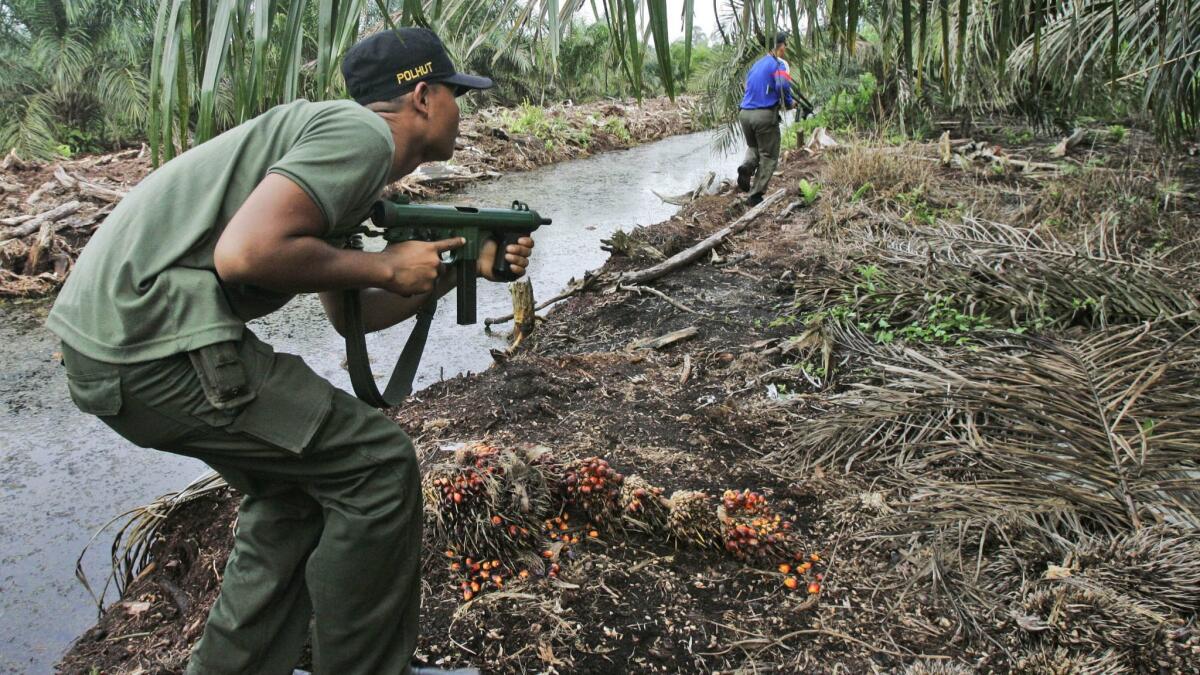Q&A: New Asian roads could mean end of the road for tigers, wildlife official says
- Share via
Wildlife advocates are on a mission — to double the number of tigers in the wild by 2022. Though progress is being made, there are concerns that the scale and pace of infrastructure development plans in Asia could destroy all recent gains.
“It’s not hopeless,” said Jon Miceler, senior director of Asia Programs for the World Wildlife Fund. “There are so many bright spots. Saving tigers is something we can do.”
But, he warned, “if we fail to do that, somehow or another our human family [would have] failed to protect something great that we share the Earth with.”
He recently shared insights on the predicament facing tigers in an interview with The Times.
His comments have been edited for length and clarity.
What is the current status of the world’s tiger population and how has it changed over the years?
In the last 100 years or so we’ve lost about 97% of the tiger population in the wild. Tigers today inhabit about 7% of their original range. We hit a really grim low point in 2008 where we got down to between 3,200 and 3,000 tigers in the wild. In 1900, there were over 100,000.
Today, we have some good news. We think the tiger numbers are going up in certain landscapes, particularly in Russia, in Nepal, in Bhutan and India. With the uptick in numbers, we are at about close to 3,900.
Where do tigers face the biggest threat?
Right now, in Laos, Cambodia and Vietnam, tigers are functionally extinct. There may be a couple there, but they’re not what we call a breeding population, which can allow them to reproduce.
What’s behind the demise of the tigers in those regions?
The reason that we’ve seen extirpation faster in those areas is [that] there’s greater demand for tiger product, which comes out of a larger cultural history around the [belief that] tiger body parts are useful for various medicines.
There’s never been any Western science behind the efficacy of these medicines, that [they] can cure all sorts of diseases. So there’s been a lot of pressure on those [tiger] populations because of demand from places such as Vietnam and China for tiger body parts and the skin.
There have really been two factors that have led to the decimation of the tiger population. One is poaching for that illegal trade in body parts. And two, is habitat loss — massive conversion of forest and grasslands to agriculture. It’s an ongoing trend. And now an emerging one is linear infrastructure [roads, railway, high-tension wires, water and gas pipelines].
Eleven thousand kilometers [about 6,800 miles] of new linear infrastructure is going to be needed — according to the Asian Development Bank — for Asia to keep its growth up well into the 21st century. And virtually all those plans will cut through what is prime tiger habitat.
How do you respond to the argument that the benefits of infrastructure development for human beings far outweigh saving tigers?
We’re not saying don’t build that stuff. What we’re saying is there’s a right way and a wrong way to do it. And according to amazing science that comes out of various landscape ecology disciplines, you can build a road and you can do it the right way, [taking into account] little things like what you do with the dirt, how you excavate a road, [providing] crossovers for animals to move over and under.
The easiest way to do that is by using very, very high-tech, easily accessed, inexpensive mapping data that allows an organization like the World Wildlife Fund to go in and map the whole country and all of its natural ecosystem endowments, so that we can tell a government before they develop [that] “this is a really important watershed and forest, it houses tigers, wild elephants, it has the potential for Asian one-horned rhino [and] if you develop this you’re going to lose all that as well as the potential to develop tourism there. And tourism is a great creator of jobs.”
We’re not saying don’t build roads. But there’s a green way to do it. And that’s what we’re advocating.
Where are some of the bright spots?
Myanmar has emerged out of 50 years of isolation and it’s relatively peaceful. They’ve recently asked us to help them devise a green infrastructure framework for the entire country. So that means how to put the best roads in, how to enhance the railroads, in ways that don’t damage that nature.
Has there been pushback from any governments?
There’s not been any pushback, but there’s not been as swift action as we would like. Some of the greatest tiger landscapes are in Malaysia and Indonesia, but they haven’t yet done these surveys. The countries that have really gotten into the surveys and done robust surveys — Russia, Bhutan, Nepal and India — [have] come back with much more accurate, larger numbers [of tigers] than before.
I don’t know whether it’s a question of inertia or a conflict of interest. [But] when you protect a tiger you’ve got to have healthy forests. That means you can’t just have palm oil [production]. Indonesia does a lot of palm oil. They need to set aside some forest and really protect it, because a tiger can’t survive in a mono-crop like that.

I think all these countries genuinely want their biological heritage to keep existing in a healthy way. They get it. But there are so many other interests and priorities.
How realistic is the goal to double the tiger population by 2022?
We’ve been very encouraged by the numbers that we’re seeing now. It’s not to say there aren’t immense challenges. But there is the will to do it. India is a case in point. They’re spending upward of $30 million a year on tiger conservation. That’s not just protecting the cat. You can’t protect a tiger unless you have a healthy forest.
One protected tiger in a forest we estimate ensures 25,000 acres of healthy forest. You get the whole ecosystem. And that forest ecosystem sequesters carbon. It provides shelter for a whole cascade of lesser species. It provides water. In areas where they’ve kept the forest you have very little flooding because of the natural filtration systems that forests provide. They capture the water and release it in a timed way so that a downstream farmer can plan to irrigate. So there’s a lot of direct benefits that come from protecting that tiger in the forest.
Why save tigers as opposed to elephants or whales or other species?
All those species are incredibly important. But a tiger sits at the top of this pyramid of this ecosystem. When you have a healthy tiger, you can virtually guarantee that you’re providing habitat for the other species. When you don’t have a tiger in a forest, something’s wrong. And that’s going to mean trouble for these other species as well. When you have one there, you’ve created the enabling conditions for the other species to survive. We’re going for that one at the top, to protect that one, with the expectation that there’s going to be a natural trickle-down effect that will protect other species.
For more on global development news, see our Global Development Watch page, and follow me @AMSimmons1 on Twitter
ALSO
As Trump threatens world climate pact, will India keep its promises to cut emissions?
The state of the world? Every day, 800 million people go to bed hungry, the U.N. says
The U.S. is abdicating its role as the world’s climate leader. Can China take its place?
More to Read
Sign up for Essential California
The most important California stories and recommendations in your inbox every morning.
You may occasionally receive promotional content from the Los Angeles Times.











